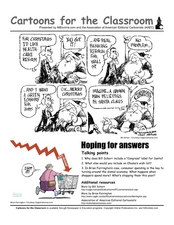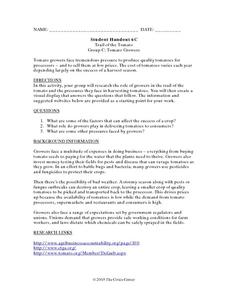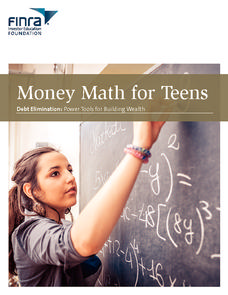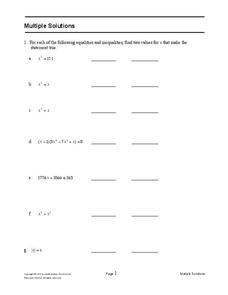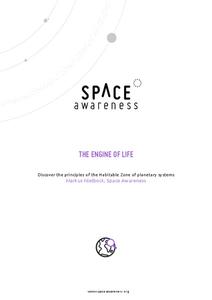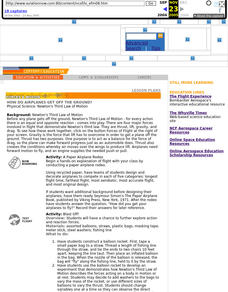Curated OER
Cartoons for the Classroom: Congress and the President
Learners take a critical look at the ways in which the president interacts with Congress in order to make political and economic decisions. They use a series of well-constructed discussion questions to guide their thinking as they...
Curated OER
Cartoons for the Classroom: The Bush and Clinton Years
Examine how the Bush and Clinton years are an example of political dynasties. This cartoon provides a way to explore the concept and activate critical thinking skills in order to better grasp U.S. Politics. A fun and educational way to...
Curated OER
Fourth of July Addition and Subtraction
What is Thomas Jefferson signing? Focus on American history with this cross-curricular math puzzle. Learners utilize addition and subtraction skills to solve the mystery of the Fourth of July. All numbers are 3-digit, and there are no...
Curated OER
Trail of the Tomato Growers
Economic pressures to produce and harvest in order to meet consumer needs is a very real issue. In small groups, the class uses three guiding questions to research the pressures on tomato growers to harvest at a level that meets the...
Skyscraper Museum
Changes in a City Over Time
Investigate the growth and development of New York City with the final lesson in this four-part series on skyscrapers. Learners first explore the concept of urban growth by looking closely at a series of three paintings made of Wall...
Money Math for Teens
Debt Elimination - Power Tools for Building Wealth
What does it mean to be wealthy? Your learners will consider how carrying debt affects budgeting, and learn about the debt snowball strategy and how is it used in the concept of eliminating debt in order to build wealth.
Mathematics Assessment Project
Multiple Solutions
So many different kinds of equations and inequalities! Learners solve equations and inequalities with quadratics and other higher-order polynomials. They then classify the equations based on the number of solutions.
Mathematics Assessment Project
Multiplying Cells
Powers of two: it's a matter of doubling. A short summative assessment task asks pupils to determine a process to calculate the number of cells at given time intervals. They use powers of two in order to calculate the number of...
Space Awareness
The Engine of Life
There is a specific zone, or distance from a star, that a planet must be in order to have water in a liquid form. The activity demonstrates how flux density depends on its distance from the source. A photovoltaic cell gets power to...
CK-12 Foundation
Newton's Apple
Scientists state that the higher something is above the earth, the greater the gravitational potential energy. Does this mean there is more gravity acting on the moon than on an apple falling from a tree? Scholars adjust the distance...
Education Development Center
Finding Triangle Vertices
Where in the world (or at least in the coordinate plane) is the third vertex? Given two coordinate points for the vertices of a triangle, individuals find the location of the third vertex. They read an account of fictional...
Curated OER
"Environmental Activism and its Components"
Students explore how an individual has power and voice in all levels of the government as well as in the making of laws that involve environmental issues and regulations. They assess the steps involved in turning a bill into law. In...
Curated OER
River Width
Students determine the level of accuracy needed for computations involving measurements and irrational numbers. They use the correct number of digits in computation to achieve an appropriate unit or level of accuracy when solving...
Curated OER
How Do Airplanes Get Off the Ground
Students construct various types of paper airplanes, exploring action and reaction forces by conducting a paper airplane rodeo. Students then discuss how Newton's Third Law of Motion affected their planes.
Curated OER
The Journey of a Bill
Fifth graders discover how a bill becomes a law in America. After watching a video, they put the steps of a bill becoming a law into the correct order. They create their own bill that they believe needs to be passed out of construction...
Curated OER
The Enthalpy of Chemical Change
In this chemical change learning exercise, learners review enthalpy and use Hess's law to calculate enthalpy and the heat of reaction for given reactions. This learning exercise has 3 problems to solve.
Curated OER
Pine Wood Derby Prompt
Eighth graders use Newton's Laws of Motion to assist a troop in making a winning car in the Pine Wood Derby.
Curated OER
Reading Quilt/Main Idea
Sixth graders study main events in a story. In this reading comprehension lesson, 6th graders illustrate each event on a piece of paper with a quotation from the book and a summary of the event to represent the caption of...
Curated OER
Numbers Table Exercise
In this number order worksheet, students study the given numbers and fill in each missing number from 1 to 100. Students enhance their number recognition skills.
Curated OER
Chemical Reactions
In this chemical reactions worksheet, students write rate expressions, determine the order of reactants and the rate law, and calculate the rate constant from data. Students calculate the half-life for given reactions. This worksheet has...
Curated OER
Entropy
In this entropy worksheet, students review the Second Law of Thermodynamics and explore how entropy changes. This worksheet has 5 word problems.
Curated OER
One After Another!
In this numeral order worksheet, students study the six pictures of 'The Three Little Pigs' story and the numbers in each one. Students use the numbers to put the pictures in order and glue them on a separate sheet of paper.
Curated OER
Using Trigonometric Ratios
Students solve problems using sine and cosine. In this trigonometry lesson, students apply the properties of sine and cosine to solve triangular problems. They identify when to use law of sines using angle-side relationships.
Curated OER
Using the Simple Present: Everyday Activities, Page 1
In this order of action worksheet, students read about five actions taken while waking up, making eggs, or driving a car. Students number the events to show the order in which the actions happen.
